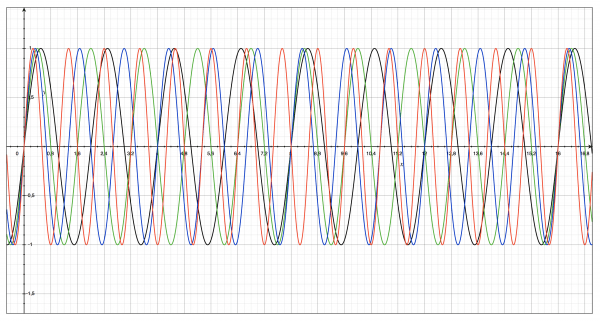Okay, here is some food for thought. Maybe someone can help me and think it further:
I thought about intervals and chords only to be very fast rhythm. Like a4 = 440Hz, the 5th = e5 = 660Hz and so on. This means, that if the rhythm of a4 is a quarter note, the rhythm of the e5 is 1,5 times that fast. Can you follow me so far?
Then I started building a graph, where I can see a sine-curve per interval. Whenever it crosses the x-axis it’s a beat. As as example I added the three curves of a simple major chord. 1-3-5. The root is black, the fifth is blue, and the major third is green.
As you can see, they all meet after 4 beats, so it might sound strange, but this harmony can easily be transferred into one bar of 4/4. It’s not so easy with the minor third or notes like the 7 or b7, but there are also repetitive patters for that.
The rhythm of the intervals of a minor 7 chord will repeat after 10 beats.
The intervals of a major 7 chord will repeat after 8 beats.
Has someone else already experimented with this? Do you have any idea how I could transfer this into real rhythms? Maybe some LFOs and a modular setup will work. I’m in explorer mode, so hit me up with questions and ideas…




